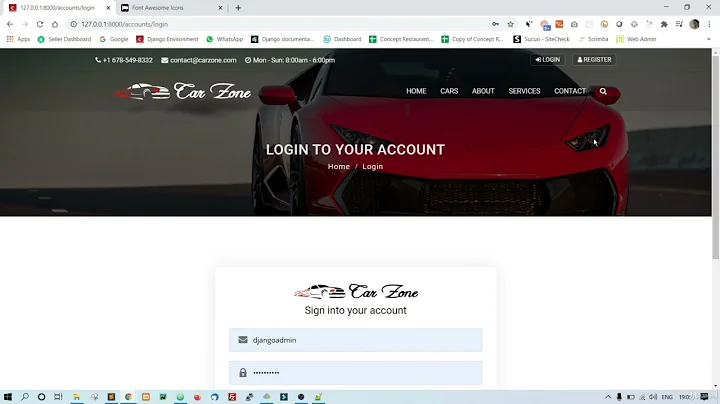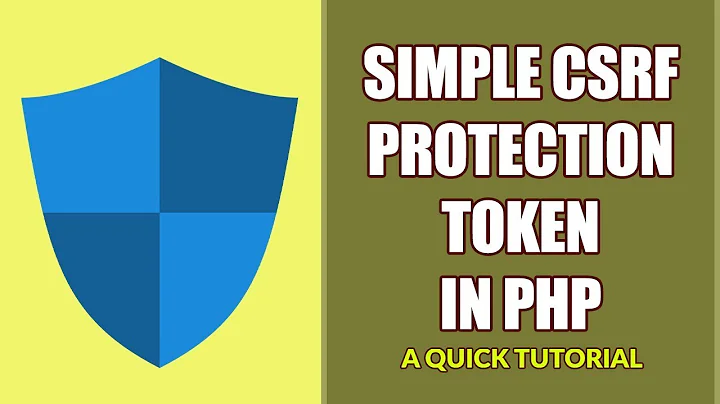How to add csrf token to the html form?
I tried different ways and eventually I've found the solution:
Previously index.html was located in the folder /resources/static
I put it in the folder /resources/templates. Also I've added dependency:
compile('org.thymeleaf:thymeleaf-spring5');
and explicitly declared the controller:
@RequestMapping("/")
public String index(){
return "index";
}
index.html look like this:
<html lang="en" ng-app="springChat" xmlns:th="http://www.springframework.org/schema/beans">
<head>
...
<meta name="_csrf" th:content="${_csrf.token}"/>
<meta name="_csrf_parameter_name" th:content="${_csrf.parameterName}"/>
....
</body>
<script type="application/javascript">
$('#login-form').submit(function (ev) {
ev.preventDefault(); // to stop the form from submitting
var token = $("meta[name='_csrf']").attr("content");
var paramName = $("meta[name='_csrf_parameter_name']").attr("content");
$('<input>').attr('type', 'hidden').attr('name', paramName).attr('value', token).appendTo('#login-form');
this.submit();
});
</script>
</html>
Looks like spring boot searches in /resources/static raw html if we don't have explicitly declared mapping and doesn't try to insert values like th:content="${_csrf.token}" into variables.
Related videos on Youtube
gstackoverflow
Updated on June 04, 2022Comments
-
gstackoverflow almost 2 years
After I enabled csrf(removed line
.csrf().disable()) in my application my login request stopped working -/loginPOSTredirects me to the home page:On the page I have following js:
<script type="text/javascript" src="/webjars/js-cookie/js.cookie.js"></script> ... $('#login-form').submit(function (ev) { ev.preventDefault(); // to stop the form from submitting var headerName = "X-CSRF-TOKEN"; var token = Cookies.get('XSRF-TOKEN') $('<input>').attr('type', 'hidden').attr('name', '_csrf').attr('value', Cookies.get('XSRF-TOKEN')).appendTo('#login-form'); this.submit(); // If all the validations succeeded })Can you clarify what am doing wrong?
P.S.
I read a lot of related stuff and everywhere I found lines like this:
<meta name="_csrf" content="${_csrf.token}"/> <!-- default header name is X-CSRF-TOKEN --> <meta name="_csrf_header" content="${_csrf.headerName}"/>I don't understand how should I set value
_csrf.headerNameI tried to add these data to meta bit its doesn't resolve:

and I tried to add it to the form directly:
And no success again.
Additionally i tried this:
But as you can see - it doesn't resolve my attributes too
P.S.2
configuration:
EnableWebSecurity @EnableGlobalMethodSecurity(prePostEnabled = true) public class WebSecurityConfig extends WebSecurityConfigurerAdapter { private static final String SECURE_ADMIN_PASSWORD = "rockandroll"; @Override protected void configure(HttpSecurity http) throws Exception { http .formLogin() .loginPage("/index.html") .loginProcessingUrl("/login") .defaultSuccessUrl("/sender.html") .permitAll() .and() .logout() .logoutSuccessUrl("/index.html") .permitAll() .and() .authorizeRequests() .antMatchers("/js/**", "/lib/**", "/images/**", "/css/**", "/index.html", "/","/*.css","/webjars/**", "/*.js").permitAll() .antMatchers("/websocket").hasRole("ADMIN") .requestMatchers(EndpointRequest.toAnyEndpoint()).hasRole("ADMIN") .anyRequest().authenticated(); } @Autowired public void configureGlobal(AuthenticationManagerBuilder auth) throws Exception { auth.authenticationProvider(new AuthenticationProvider() { @Override public boolean supports(Class<?> authentication) { return UsernamePasswordAuthenticationToken.class.isAssignableFrom(authentication); } @Override public Authentication authenticate(Authentication authentication) throws AuthenticationException { UsernamePasswordAuthenticationToken token = (UsernamePasswordAuthenticationToken) authentication; List<GrantedAuthority> authorities = SECURE_ADMIN_PASSWORD.equals(token.getCredentials()) ? AuthorityUtils.createAuthorityList("ROLE_ADMIN") : null; return new UsernamePasswordAuthenticationToken(token.getName(), token.getCredentials(), authorities); } }); } }build.gradle:
buildscript { repositories { mavenCentral() } dependencies { classpath("org.springframework.boot:spring-boot-gradle-plugin:2.0.1.RELEASE") } } apply plugin: 'java' apply plugin: 'eclipse' apply plugin: 'org.springframework.boot' apply plugin: 'io.spring.dependency-management' jar { baseName = 'gs-messaging-stomp-websocket' version = '0.1.0' } sourceCompatibility = 1.8 targetCompatibility = 1.8 repositories { mavenCentral() } dependencies { compile("org.springframework.boot:spring-boot-starter-websocket") compile("org.webjars:webjars-locator-core") compile("org.webjars:sockjs-client:1.0.2") compile("org.webjars:stomp-websocket:2.3.3") compile("org.webjars:bootstrap:3.3.7") compile("org.webjars:jquery:3.1.0") compile("org.webjars:js-cookie:2.1.0") compile("org.springframework.boot:spring-boot-starter-actuator") //security compile ('org.springframework.security:spring-security-messaging') compile group: 'org.springframework.security', name: 'spring-security-web' compile group: 'org.springframework.security', name: 'spring-security-config' testCompile("org.springframework.boot:spring-boot-starter-test") }-
 ikos23 about 6 yearsOk, I can see U added more info. I'd like to ask you to add more details about what error you are getting (or what behavior you expect but it does not work that way).
ikos23 about 6 yearsOk, I can see U added more info. I'd like to ask you to add more details about what error you are getting (or what behavior you expect but it does not work that way). -
holmis83 about 6 yearsDo you use server template language JSP or Thymeleaf?
-
gstackoverflow about 6 years@holmis83 I use raw html
-
gstackoverflow about 6 years@john Result the same). /login responds 302 instead of successful login. Login happens successfuly in case of I disable csrf explicitly(.csrf().disable())
-
-
gstackoverflow about 6 yearsI use raw html so I can't use it
-
venkatReddi over 5 yearsThis solution works, but do you know why in a jsp form we can send that a form data, but when we are doing Ajax we need to add it as a header instead of form data in body? Confusing
-
Guru over 4 yearsthanks! just to get attention th: is very important prefix here.







